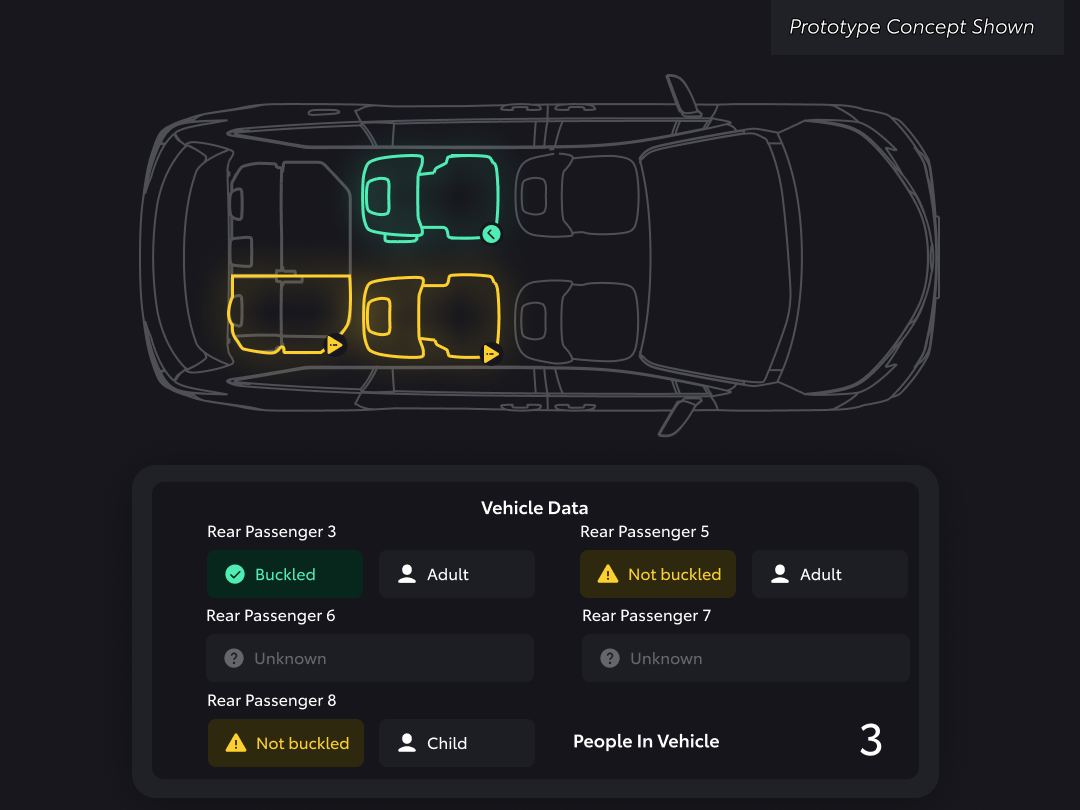Toyota Connected North America (TCNA), Toyota’s independent software and innovation division, introduced a new version of the Cabin Awareness technology. This feature uses high-resolution 4D imaging radar to detect people and certain pets inside vehicles to ensure you don’t leave anyone behind. The radar is mounted inside the cabin and out of sight above the headliner so it can detect life forms inside even when the driver isn’t there.
Cabin Awareness can detect micro-movements like heartbeats, motion, and respiration across three rows of seating, the footwells, and the cargo area. The system classifies occupants based on size, posture, and position in support of advanced safety applications. Its level of sensing is strong enough that it can sense occupants even if they’re covered with a blanket, which would prevent passersby from seeing if someone is inside a vehicle. Due to the use of a high-resolution radar sensor, Toyota isn’t utilizing weight sensors, cameras, and other types of radar sensors, which are prone to false alerts, blind spots, and a shorter range of detection.
Toyota’s Cabin Awareness system detects people and pets inside vehicles
“Toyota Connected’s talented software engineers and data scientists are leveraging cutting-edge technology to bring innovation and advanced technologies to customers’ vehicles,” said Zack Hicks, CEO, and President of TCNA and Executive Vice President and Chief Digital Officer at Toyota Motor North America. “We are extremely proud of our efforts to take this idea from the drawing board to a full-blown concept, and, hopefully, developing a technology that has the potential to save lives.”
Although it’s still in the concept stages, Toyota is putting Cabin Awareness through real-world trials with its partner, May Mobility. Both companies are working together on autonomous driving technologies and are using the former’s Sienna hybrid minivan as the testbed. Currently, public autonomous vehicle testing is taking place in Ann Arbor, Michigan, and Arlington, Texas with more deployments coming by late 2022. Some of the vehicles used for testing were also modified to become ADA-compliant and accommodate passengers in wheelchairs.
One of the future applications for autonomous shuttles is to alert parents when their children complete their rides. Additionally, this can allow the shuttle to delay driving to their next stop if a person is detected and hasn’t gotten off upon reaching their destination. Edwin Olson, CEO of May Mobility noted his company works with strategic partners like Toyota to advance safety technologies especially when it comes to autonomous cars.
As we move closer to driver-out operations next year and continue to scale our global business with more public AV deployments, technology like the Cabin Awareness concept is essential for our riders,” added Olson.
Cabin Awareness currently provides an array of warnings that alert the driver and passersby to check the vehicle for people or pets who have been unknowingly left behind inside. In case there’s no response to warning lights, horn honks, and emergency lights flashing, the owner can get text messages and/or notifications via the Toyota app. If programmed, Cabin Awareness can also send alerts to your smart home devices and send text messages to emergency contacts. The TCNA team is also exploring additional capabilities like vehicle-to-vehicle (V2V) communication and using the infrastructure to send out warnings.
